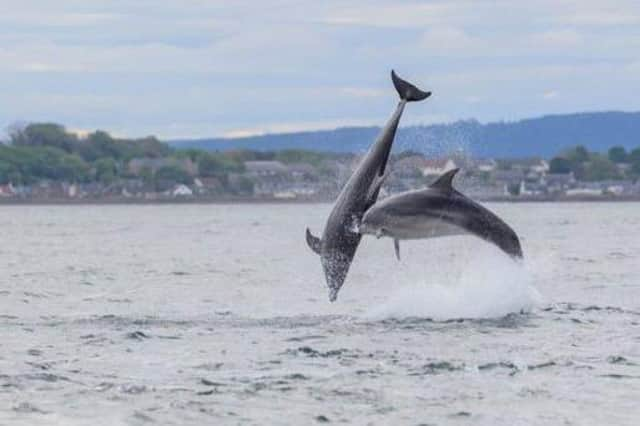Highland police urge public not to chase dolphins and whales when out on water amid rise in ‘disturbance’ reports


Scotland’s nature agency, NatureScot, has a guide to best practice for watching marine wildlife which provides detailed information and advice on how to behave responsibly around species including dolphins, whales, basking sharks, seals, birds, otters and turtles.
Disturbances can include causing direct injury or disrupting communication, breathing, migration, feeding and nursing calves.
Advertisement
Hide AdAdvertisement
Hide AdPolice wildlife crime officer, Hannah Haywood, said: “Whales, dolphins and porpoises (collectively known as cetaceans) are wonderful to watch but we need to remember that they are a protected species and it is an offence to deliberately or recklessly disturb or harass them.
"If you are out on the water and are lucky enough to have a dolphin or a pod come close to your vessel then do not make sudden changes in your speed or direction or travel. Please do not chase or repeatedly approach them, try to scatter them or swim with them. Let the animal decide if it wants to interact and if they depart this should be respected, everyone should follow the Scottish Marine Wildlife Watching Code.”
The NatureScot guide says there are a number of reasons why people need to be careful around cetaceans.
There is a risk of collision with boats which could affect an animal’s wellbeing or survival, with some showing scarring caused by propellers.
Engine noise may interfere with communication between animals and drown out sound from predators or prey. In severe cases, resonance may occur in the balance organs causing disorientation or injury to the ear.
Calves can also be separated from their mothers, especially if there are several boats around. Animals can also feel trapped if they are surrounded or feel hunted if they are being actively followed.
High speeds on the water also increases likelihood of collisions and more severe injuries.
Feeding cetaceans is also not recommended for several reasons. The food may be unsuitable, the animals may learn to come too close to boats and risk collision, and they can also become aggressive close-up and potentially transmit disease.
How to watch cetaceans responsibly
Advertisement
Hide AdAdvertisement
Hide AdThe NatureScot guide says approaching at an oblique angle is important and that, if animals are moving in a consistent direction, a boat should maintain a steady parallel course.
Widely accepted rules of thumb for minimum approach distances are 50 metres for dolphins and porpoises and 100 metres for whales. Between 200 and 400 metres is more suitable for mothers and calves, or for animals that are clearly actively feeding or in transit - moderate to fast swimming in a single direction.
The guide says boats should not approach cetaceans from directly behind and they should not be cut off by moving across their path.
It also warns to never chase them. If they move off faster than the boat, it is probably because they do not want to be around it.
The guide also suggests minimising time with the animals, as it allows others to watch as well.
Comments
Want to join the conversation? Please or to comment on this article.